OTHER A TO Z GUIDES FROM THE SCARECROW PRESS, INC.
1. The A to Z of Buddhism by Charles S. Prebish, 2001.
2. The A to Z of Catholicism by William J. Collinge, 2001..
3. The A to Z of Hinduism by Bruce M. Sullivan, 2001.
4. The A to Z of Islam by Ludwig W. Adamec, 2002.
5. The A to Z of Slavery & Abolition by Martin A. Klein, 2002.
6. Terrorism: Assassins to Zealots by Sean Kendall Anderson and Stephen Sloan, 2003.
7. The A to Z of the Korean War by Paul M. Edwards, 2005.
8. The A to Z of the Cold War by Joseph Smith and Simon Davis, 2005.
9. The A to Z of the Vietnam War by Edwin E. Moise, 2005.
10. The A to Z of Science Fiction Literature by Brian Stableford, 2005.
11. The A to Z of the Holocaust by Jack R. Fischel, 2005.
12. The A to Z of Washington, D.C. by Robert Benedetto, Jane Donovan, and Kathleen DuVall, 2005.
13. The A to Z of Taoism by Julian F. Pas, 2006.
14. The A to Z of the Renaissance by Charles G. Nauert, 2006.
15. The A to Z of Shinto by Stuart D. B. Picken, 2006.
16. The A to Z of Byzantium by John H. Rosser, 2006.
17. The A to Z of the Civil War by Terry L. Jones, 2006.
18. The A to Z of the Friends (Quakers) by Margery Post Abbott, Mary Ellen Chijioke, Pink Dandelion, and John William Oliver Jr., 2006
19. The A to Z of Feminism by Janet K. Boles and Diane Long Hoeveler, 2006.
20. The A to Z of New Religious Movements by George D. Chryssides, 2006.
21. The A to Z of Multinational Peacekeeping by Terry M. Mays, 2006.
22. The A to Z of Lutheranism by Gnther Gassmann with Duane H. Larson and Mark W. Oldenburg, 2007.
23. The A to Z of the French Revolution, by Paul R. Hanson, 2007.
24. The A to Z of the Persian Gulf War 19901991, by Clayton R. Newell, 2007.
25. The A to Z of Revolutionary America, by Terry M. Mays, 2007.
26. The A to Z of the Olympic Movement, by Bill Mallon with Ian Buchanan, 2007.
The A to Z of the French Revolution
Paul R. Hanson
The A to Z Guide Series, No. 23

SCARECROW PRESS, INC.
Published in the United States of America
by Scarecrow Press, Inc.
A wholly owned subsidiary of
The Rowman & Littlefield Publishing Group, Inc.
4501 Forbes Boulevard, Suite 200, Lanham, Maryland 20706
www.scarecrowpress.com
Estover Road
Plymouth PL6 7PY
United Kingdom
Copyright 2007 by Paul R. Hanson
All rights reserved. No part of this publication may be reproduced, stored in a retrieval system, or transmitted in any form or by any means, electronic, mechanical, photocopying, recording, or otherwise, without the prior permission of the publisher.
British Library Cataloguing in Publication Information Available
Library of Congress Cataloging-in-Publication Data
The hardback version of this book was cataloged by the Library of Congress as follows:
Hanson, Paul R., 1952
Historical dictionary of the French Revolution / Paul R. Hanson.
p. cm. (Historical Dictionaries of war, revolution, and civil unrest; no. 27)
Includes bibliographical references.
1. FranceHistoryRevolution, 17891799Dictionaries. I. Title. II. Series.
DC147.H36 2004
944.04'03dc22 2004002982
ISBN 0-8108-5593-3 / 978-0-8108-5593-9 (pbk.: alk. paper)
 The paper used in this publication meets the minimum requirements of American National Standard for Information SciencesPermanence of Paper for Printed Library Materials, ANSI/NISO Z39.48-1992.
The paper used in this publication meets the minimum requirements of American National Standard for Information SciencesPermanence of Paper for Printed Library Materials, ANSI/NISO Z39.48-1992.
Manufactured in the United States of America.
For my parents Jane and Kermit Hanson
Contents
Jon Woronoff
Editors Foreword
The French Revolution was not the first, nor the last of its kind, but it is certainly the most famous. It is revolution writ large, with all the passions and fears, the nobility and nastiness, the blood and thunder, the revolution that spawns larger-than-life personalities like Danton, Robespierre, and Napoleon and then devours its own children. In this case, the ramifications were exceptionally extensive, spreading throughout much of Europe and being rekindled time and again until it had achieved most of its goals, sometimes several generations later. It is impossible to understand modern European history, or world history, for that matter, without turning back to 1789, when it flared up, considering the previous decades to grasp its origins, and looking further out to witness its formal demise. This makes the Historical Dictionary of the French Revolution a landmark of sorts within the steadily growing series of Historical Dictionaries of War, Revolution, and Civil Unrest.
Although more than two centuries have passed, and an almost boundless literature has described it from every possible angle, it helps to collect and sort the basic information once again so interested readers can find what they want without too much difficulty. This is the primary task of the dictionary section, with entries on leading lights and lesser figures, crucial events and turning points, significant institutions and organizations, and some of the economic, social, and intellectual factors. The introduction provides an overall view while the chronology walks us through those turbulent times again. For those who want to extend their excursion in one direction or another, there is a select bibliography, which, although ample and including many of the better works, can only reflect a small if important portion of the literature.
Paul R. Hanson, the author of this volume, has basically two specializations, modern French and European history, and comparative revolution, paying particular attention to the Russian and Chinese revolutions. These broad interests have informed his study of the French Revolution, on which he has been lecturing and writing for over two decades. His publications, along with articles and papers, include three books: Provincial Politics in the French Revolution: Caen and Limoges, 17891794; Revolutionary France; and The Jacobin Republic under Fire: The Federalist Revolt in the French Revolution. For most of his career, since receiving a doctorate at the University of California, Berkeley, Dr. Hanson has been teaching at Butler University in Indianapolis, where he is now Dean of the College of Liberal Arts and Sciences. This historical dictionary will doubtless come in handy for his students, and for untold thousands of students around the world whowhile not necessarily enthralled by history in generalsuddenly perk up when the topic moves on to one of the most gripping events of all time.
Jon Woronoff
Series Editor
Acknowledgments
I would like to thank Jon Woronoff for asking me to undertake this project, about which I had some apprehension at first. It has been both a pleasure and an adventure to write the dictionary, giving me an excuse to spend a month and a half in Paris at the Bibliothque Nationale gathering biographical information, and the opportunity to learn a great deal more about the French Revolution as I wrote the entries over the past three years. I would like also to thank Butler University, and in particular Dean Steven Kaplan, for granting me a semester leave in the fall of 2001 to begin serious writing. Three Butler students assisted me in compiling the bibliography: Karleigh Koster, Michelle Kasten, and Courtney Campbell, and I am deeply appreciative of the care they devoted to the task.


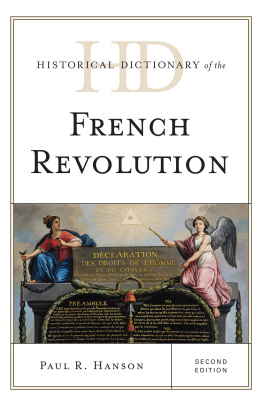
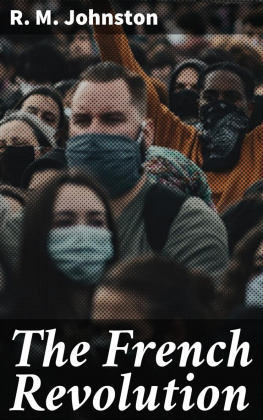

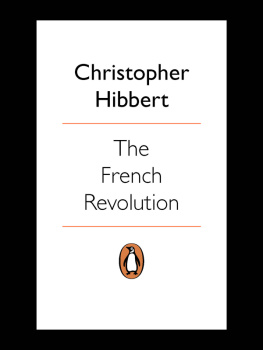

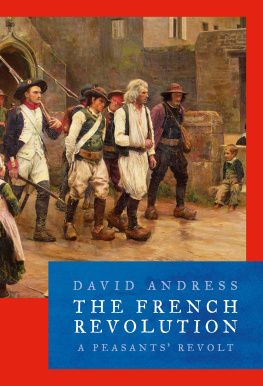

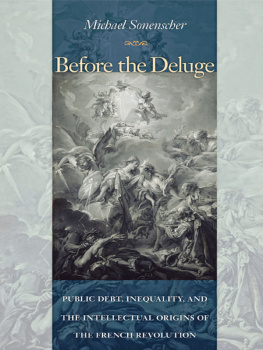
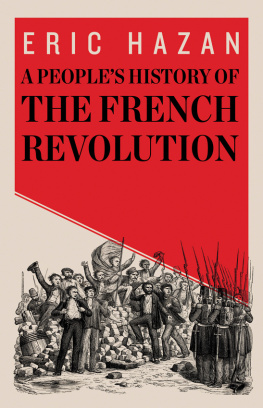
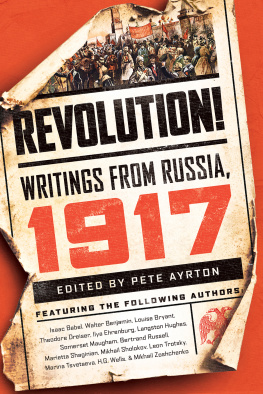
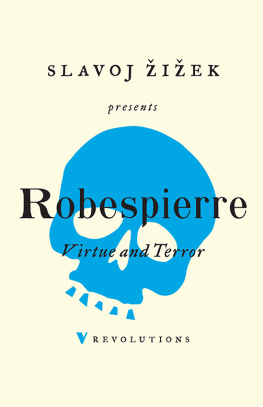
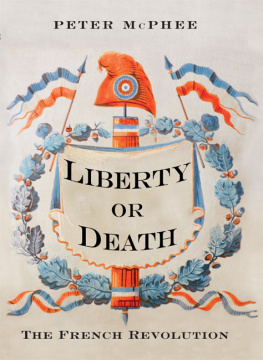

 The paper used in this publication meets the minimum requirements of American National Standard for Information SciencesPermanence of Paper for Printed Library Materials, ANSI/NISO Z39.48-1992.
The paper used in this publication meets the minimum requirements of American National Standard for Information SciencesPermanence of Paper for Printed Library Materials, ANSI/NISO Z39.48-1992.